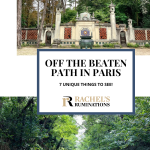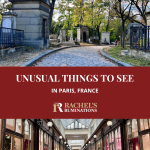Off the beaten path in Paris
Are you looking for unusual things to do in Paris? Well, you’ve come to the right place! Paris is a beautiful city with a plethora of breathtaking sights and landmarks, but there are so many unusual things to do too! Unique places that are just waiting for you to experience them. From secret bars and abandoned rail tracks to 19th-century passages and unusual parks, there’s something for everyone off the beaten path in Paris.
Note: This is a guest post by Lena.
Disclosure: This article contains affiliate links. If you click on one and make a purchase, I (Rachel) will receive a small commission.
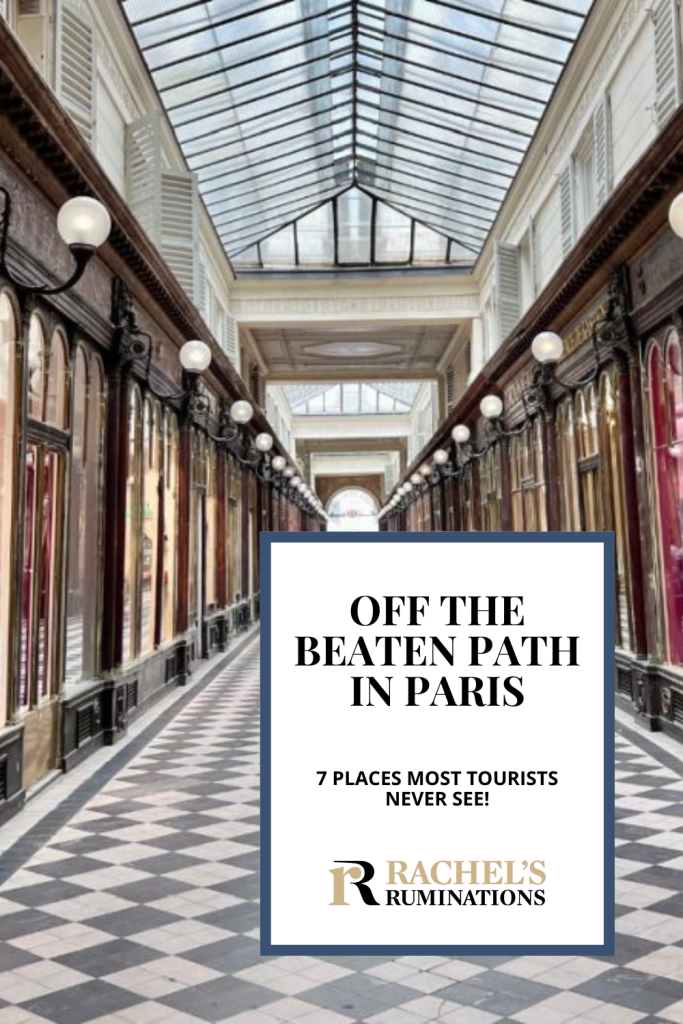
All of the places mentioned in this article are marked on the Google map below:
So, if you’ve already seen the Eiffel Tower, strolled the Jardin du Luxembourg, and visited the Louvre, read on. Without further ado, here are 7 things to do off the beaten path in Paris:
1. Find The Human Zoo
If you’re up for something truly unique, head to the east of the Bois de Vincennes. It’s here that you’ll find one of the most hidden places in Paris: a place even most Parisians don’t know about. It’s called the Human Zoo.
When France was still a colonial empire, back in the early 20th century, it was popular to host exhibitions aimed at showcasing their colonies. Exotic plants and artifacts were exhibited, but they also included entire villages, with buildings, animals, and even people. These people, imported from the colonies, were, like objects or zoo animals, on display for the white people of Europe to gawk at.
Closed during World War I, the old exhibition grounds were abandoned for decades, but reopened in 2006 as the Jardin d’Agronomie Tropical. Many of the old structures and pavilions are still standing but in poor repair. They give the park a very surreal and even a bit of an eerie flair.
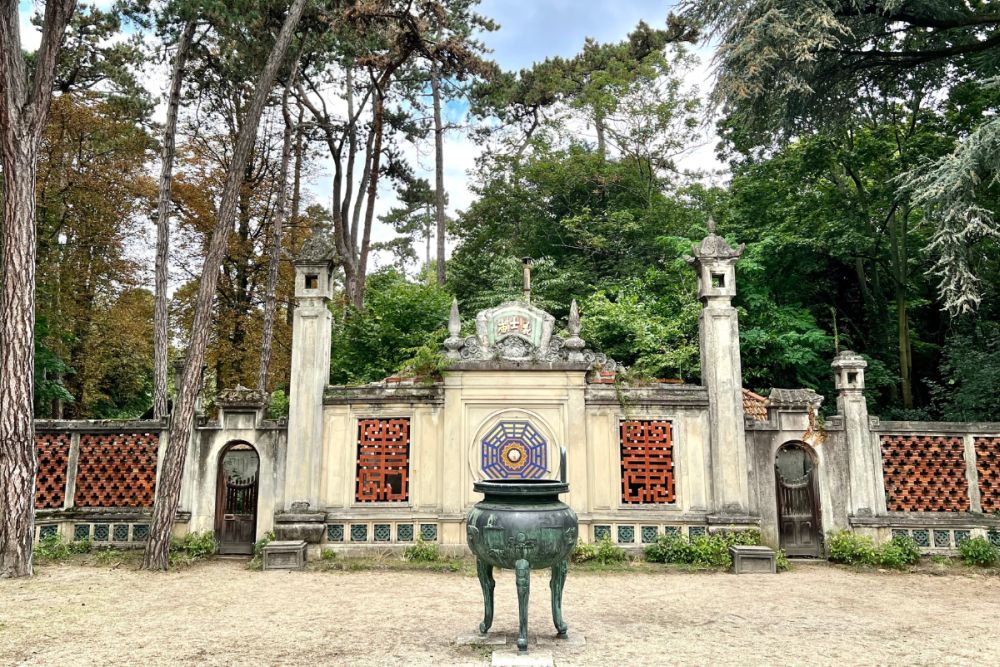
The Human Zoo: You can visit the park for free and it’s open to the public during daylight hours. It’s at the eastern corner of the Bois de Vincennes, right by the RER A station Nogent-sur-Marne.
2. Explore the Petite Ceinture
The Petite Ceinture is an old railway belt that used to encircle Paris. It was originally an urban transport system in the 19th century for both freight and passengers. But with the inauguration of the Metro in 1900, the line soon lost its purpose and closed permanently in 1934.
Until a few years ago, the old tracks lay abandoned and forgotten but became hideouts for squatters, artists, and street art lovers.
The Petite Ceinture is in total 32.5 km (20mi) long. Since 2006, some sections of the line have reopened to the public as part of a green promenade project. Today, it’s a popular spot for walks, picnics, and bike rides. As it belongs to the public park service of Paris, you can visit the Petite Ceinture during their usual opening times, which are roughly from sunrise to sunset.
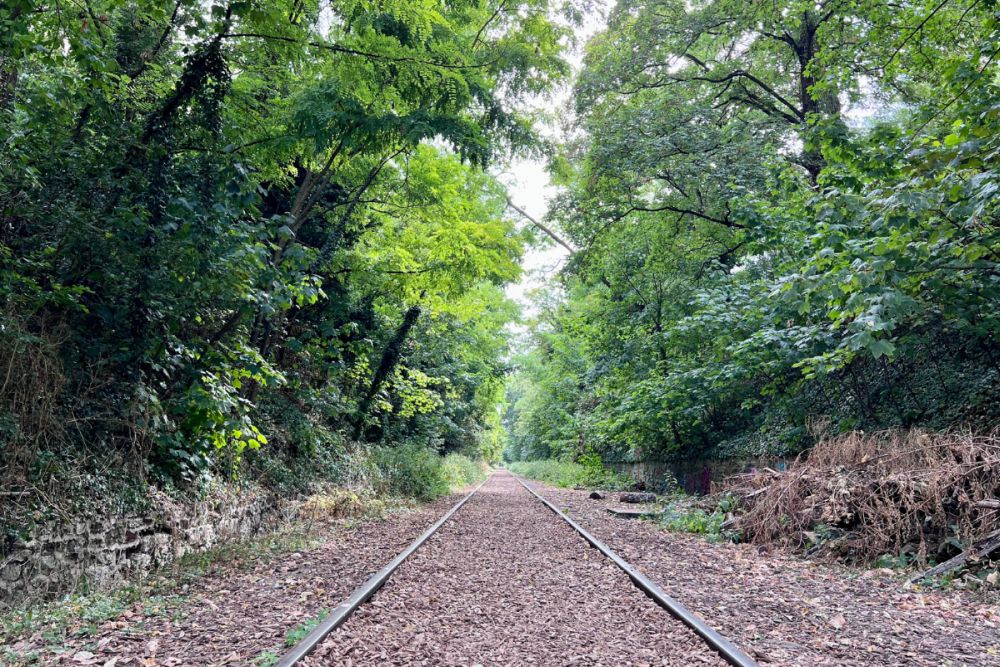
But apart from public parks, some sections are also used for cultural spaces: for example, the REcyclerie in the 18th arrondissement. They offer workshops on themes related to sustainability, urban gardening, or upcycling. Their frequently-held second-hand markets are popular too, as is their restaurant.
Petite Ceinture:
- You’ll find one of the nicest sections in the 14th arrondissement, with the entrance at 123 Rue Didot. If you’re in the area on a Saturday, try to also visit the flea market at Porte de Vanves. It’s just a few minutes away.
- The section of the Petite Ceinture in the 15th arrondissement is one of the oldest open ones, and you can enter this park at 101 rue Olivier-de-Serres. Thanks to the elevators, it’s barrier-free.
- Free admission. Website.
3. Get lost in Belleville
Belleville is a former working-class district in the northeast of Paris that is popular nowadays with artists and students. It’s one of the most multicultural areas in Paris and is also home to a large Chinese community. You’ll find many cheap and tasty restaurants here, but also many trendy bars as well as unusual little shops. Similar to Montmartre, Belleville is a hilltop neighborhood.
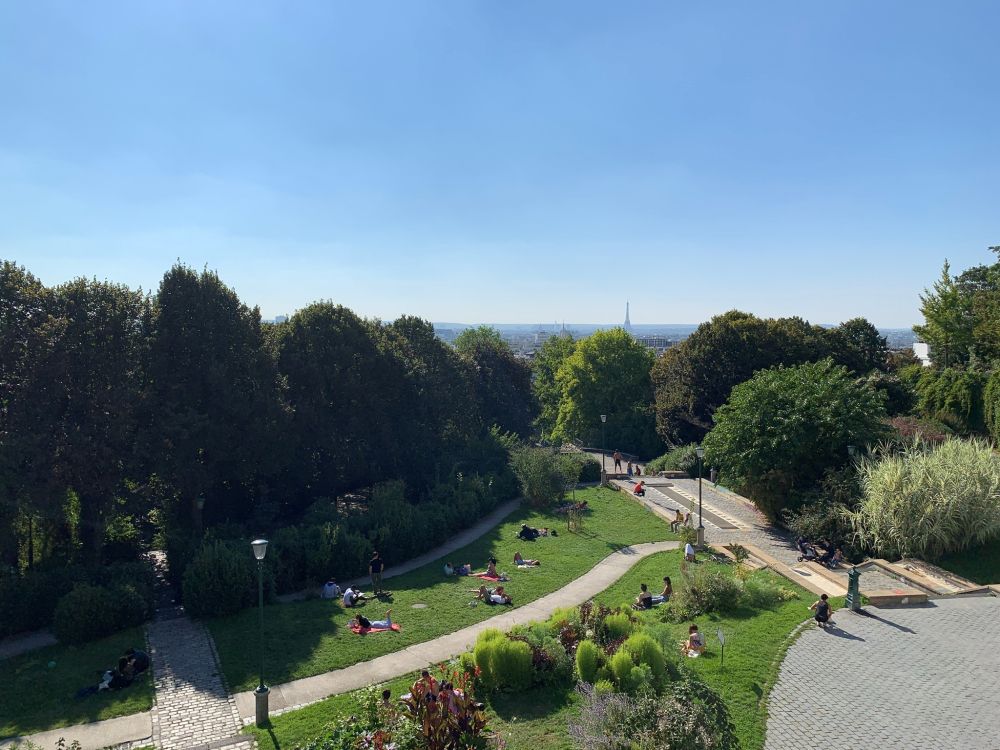
Belleville is a great place to explore without a specific plan. Start at the Rue de Belleville, a long and busy street full of bakeries, fruit stands, and butchers. Then take one of the many side streets to slowly make your way uphill.
Belleville is especially famous for street art. From gigantic murals that cover six stories of a building to small artworks that you might not even notice, street art is omnipresent in Belleville.
Take a walking tour of Belleville street art so you don’t miss the best ones!
From the top of Belleville, there’s a fantastic view of Paris. You’ll find something very rare there: a Wallace Fountain, one of many all over the city, but in this case, painted blue. On the hill, in the Parc de Belleville, you’ll also find one of very few Parisian vineyards!
Good to know: Belleville is not far from the cemetery Père Lachaise!
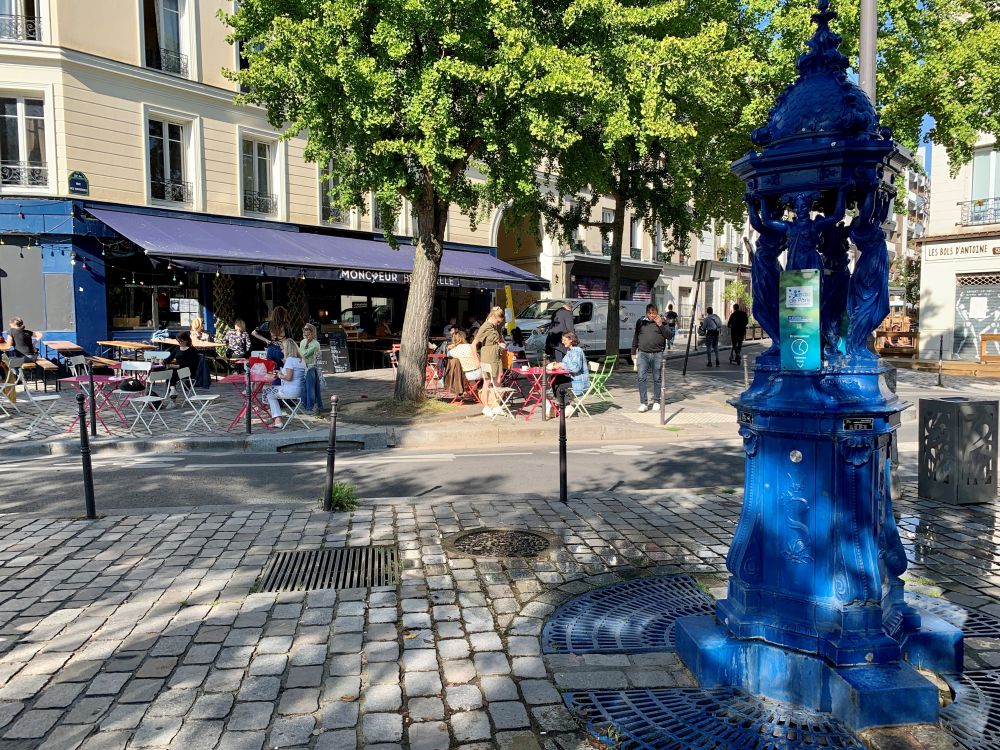
Belleville is located in the 20th arrondissement and the best way to get there is by taking the Metro to station Couronnes or Belleville. Parc de Belleville website.
Book your accommodations in Paris!
4. Discover old graves at the Père Lachaise Cemetery
The cemetery Père Lachaise is the biggest cemetery in Paris at 44 hectares (110 acres). It’s the final resting place of many celebrities including Oscar Wilde, Edith Piaf, Jim Morrison, and Frédéric Chopin.
Admittedly, it’s not so unknown anymore, but you’ll never find yourself in crowds. Even on sunny Saturday afternoons, you’ll walk the old cobblestones alone for most of your visit.
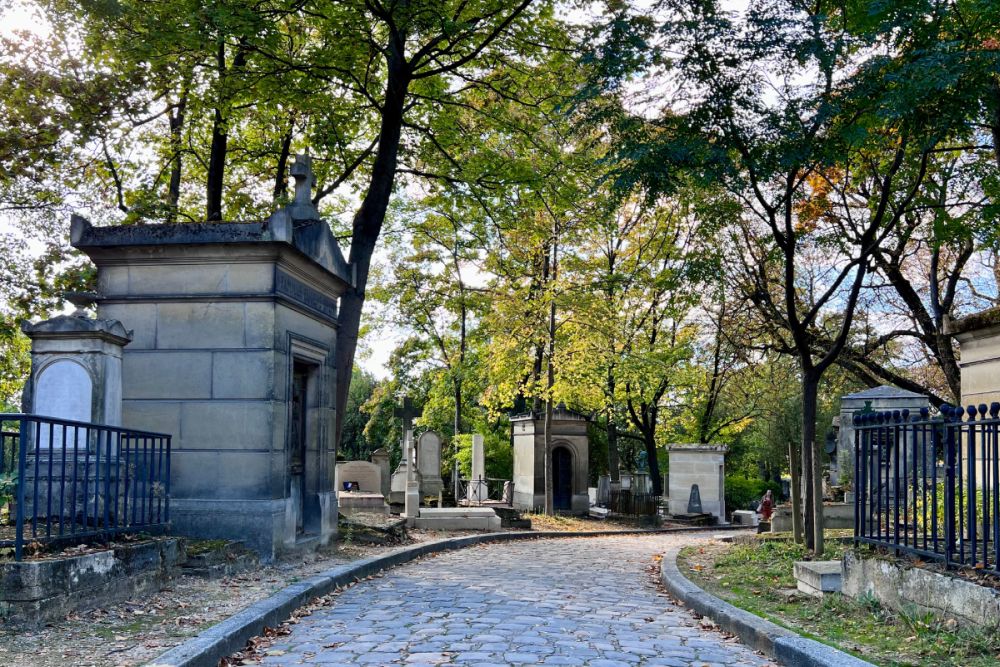
The cemetery has beautiful and extensive grounds and is still in use today, so don’t be surprised if you find graves from recently deceased Parisians next to tombstones dating back several centuries.
Take a group tour, then wander away from the famous graves to see the parts that the tours don’t visit!
Père Lachaise Cemetery is located in the 20th arrondissement. It can be reached easily by taking the Metro to station Philippe Auguste or Père Lachaise. Opening hours are from 8:00 to 18:00. Sometimes, paper maps of important graves are handed out at the main entrance. If not, look for the site maps at every entrance. Cemetery website.
5. Uncover the hidden arcades of Paris
It’s not impossible that you’ve heard about the covered arcades in Paris, but it’s also very likely that you don’t really know where they are, and they can be difficult to track down.
In the 19th century, the Parisian covered passages were a way to protect upper-class shoppers and flâneurs from bad weather and muddy roads. Back then, more than 180 of these passages existed, but only a few are still standing today.
The most famous passage is the Galerie Vivienne, located not far from the Palais Royal. It’s a beautiful passage with a well-preserved mosaic floor, a glass roof, and a very Parisian atmosphere. If you like speakeasies, there’s one hidden inside, just behind the Italian restaurant Daroco. The bar is even on the list of the world’s 100 best bars.
However, the Galerie Vivienne is by far not the only covered passage in Paris to survive. Around 20 galleries remain today; the Passage des Panoramas, the Passage Jouffroy, and the Passage Verdeau are particularly worth a visit. They are situated in a straight line, just separated by roads, so you can easily hop from one to the next.
The passages are not only good for strolling, but they are also good for souvenir shopping, dining out, and finding rare collector’s items and antiques.
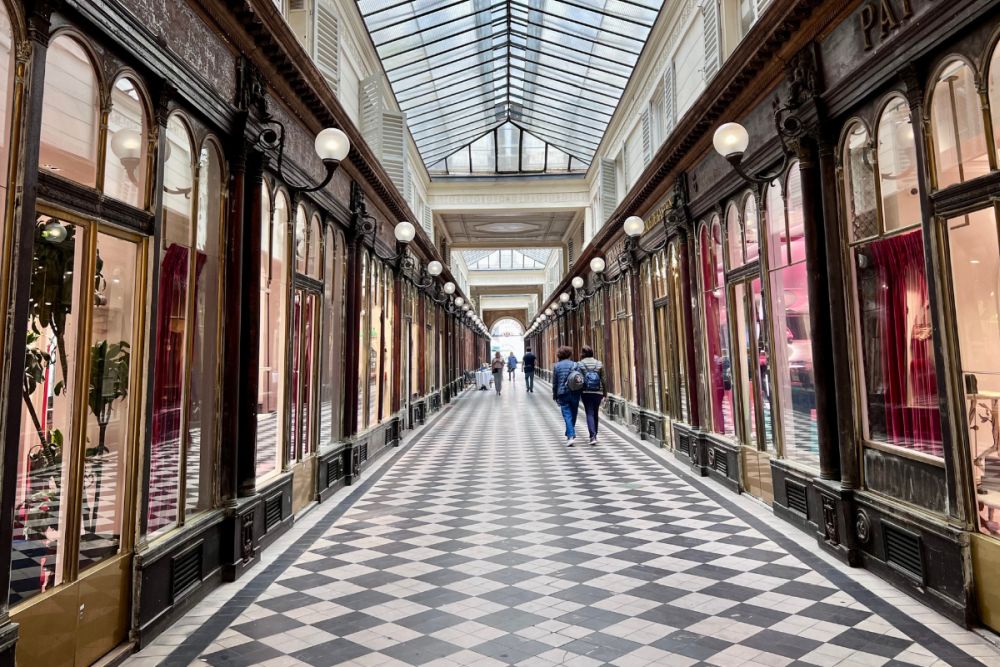
Take a self-guided audio tour of the passages using your smartphone!
6. Stroll along the Promenade Plantée
The Promenade Plantée, also known as the Coulée Verte or the Viaduc des Arts, is a 4.7 km-long (almost 3 miles) elevated walkway that used to be an old railway track. The last train ran there in 1969. Since 1993, it’s been open to the public.
Starting at the Opéra Bastille, the path takes you on a relaxing stroll through the 12th arrondissement. The first part of the Promenade Plantée is the Viaduc des Arts, with galleries and cafés located in the arcs of the viaduct on street level and the walkway on top. The Viaduct is lined with trees, flowers, pools, and benches, much like the High Line in New York City. It’s a great place to take a break from the hustle and bustle of Paris and enjoy some peace and quiet.
From there you can continue through the Jardin de Reuilly, a small park with a suspension bridge and one of the few water fountains that dispenses sparkling water. If you’re keen, you can follow the rest of the Coulée Verte all the way until the Bois de Vincennes. The Promenade Plantée ends at the edge of the Bois, but you can easily continue your walk from there.
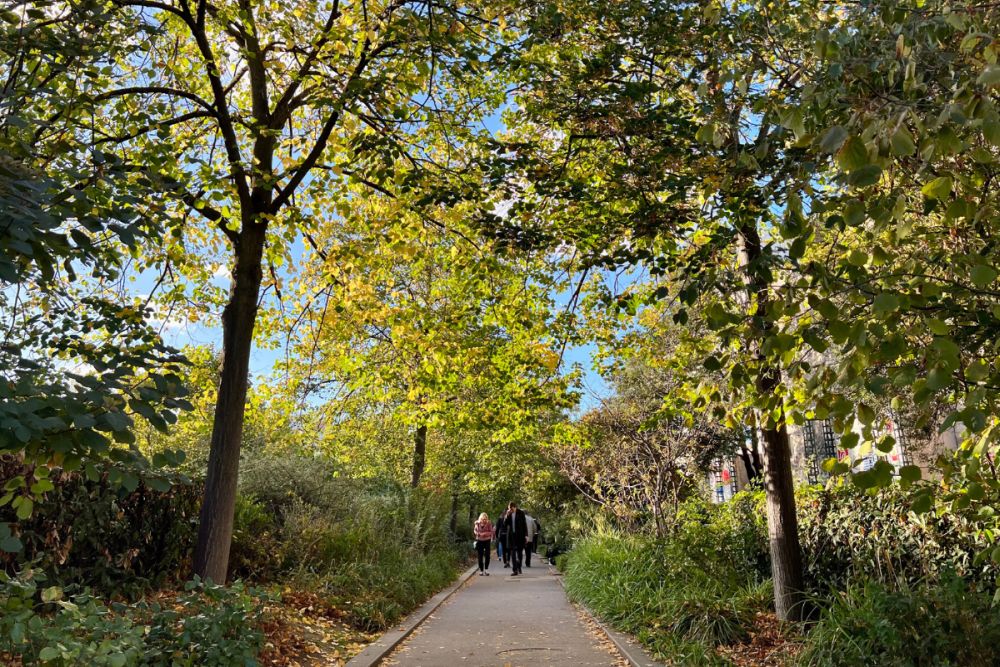
The Promenade Plantée is open every day from sunrise to sunset and can be reached by taking the Metro to Bastille. From there it’s just a short walk to the beginning of the Viaduct des Arts. The Promenade Plantée is open from 8:00 to 21:30 during the summer, and until 17:30 in winter.
Book your accommodations in Paris!
7. Take a drink in a speakeasy
Are you keen on exploring a different kind of Parisian nightlife, that has very little in common with the cute sidewalk cafés that you’re seeing left and right? Then head out to find one or more of the world-class speakeasies in Paris. Even though they mostly qualify as cocktail bars in Paris, they offer non-alcoholic beverages as well.
A warning, though: it can be quite tricky to find them. It may require a bit of courage, but that’s all part of the charm, right?
For example, the Moonshiner at 5 Rue Sedaine. Nothing hints at the bar: the address is actually a pizzeria. Here’s where you need a bit of nerve. Walk to the back of the restaurant, step through the door that says “private” and walk on until you find yourself suddenly in an old-fashioned secret bar.
Or La Mezcaleria at 13 Bd du Temple. If you want to enjoy a cocktail in this hidden Mexican bar, you have to cross not only a hotel but also a somewhat hidden restaurant. Then walk right past the kitchen until you find the entrance.
You see, it’s not for the faint of heart, but bravery will be rewarded with cocktails that are better than you find in most places in Paris.
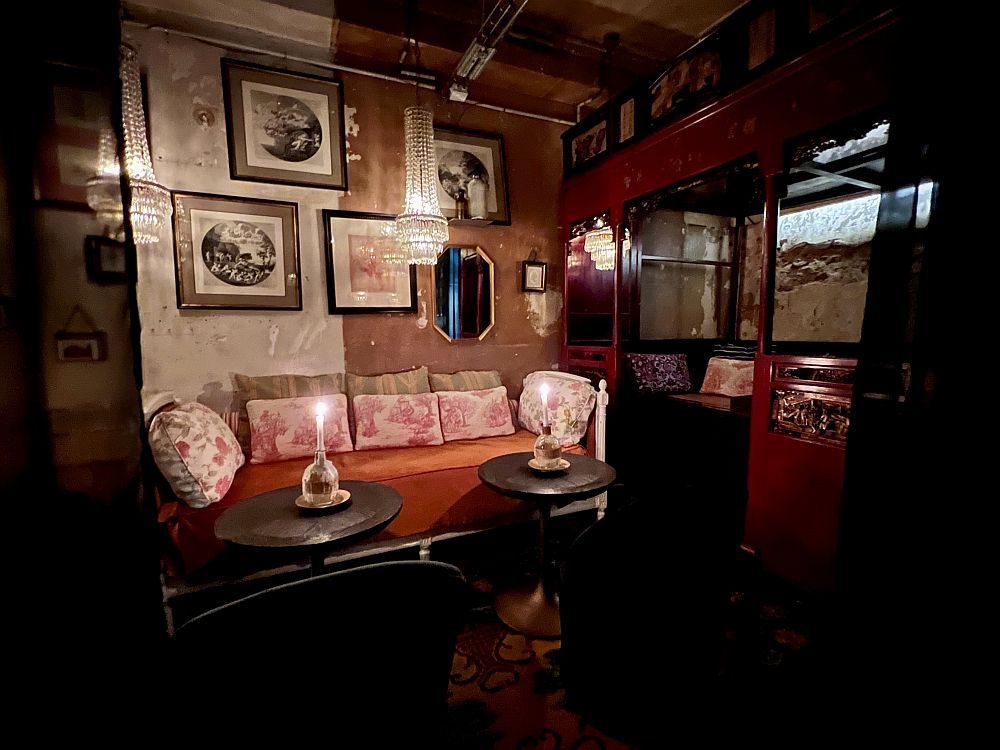
Try this private street photography tour of Paris!
As you can see, Paris is more than just the Eiffel Tower. If you want to explore like a local, you need to venture a little off the beaten path in Paris. See the standard sights, but with this guide, hopefully you can see a bit more of what Paris has to offer so that you can have a wonderful and unusual time in this beautiful city. A warning, though: Paris can be expensive, so make sure to do some budgeting beforehand.
If you have other ideas of unusual or lesser-known things to see and do in Paris, add a comment below!
Save this article for future reference!
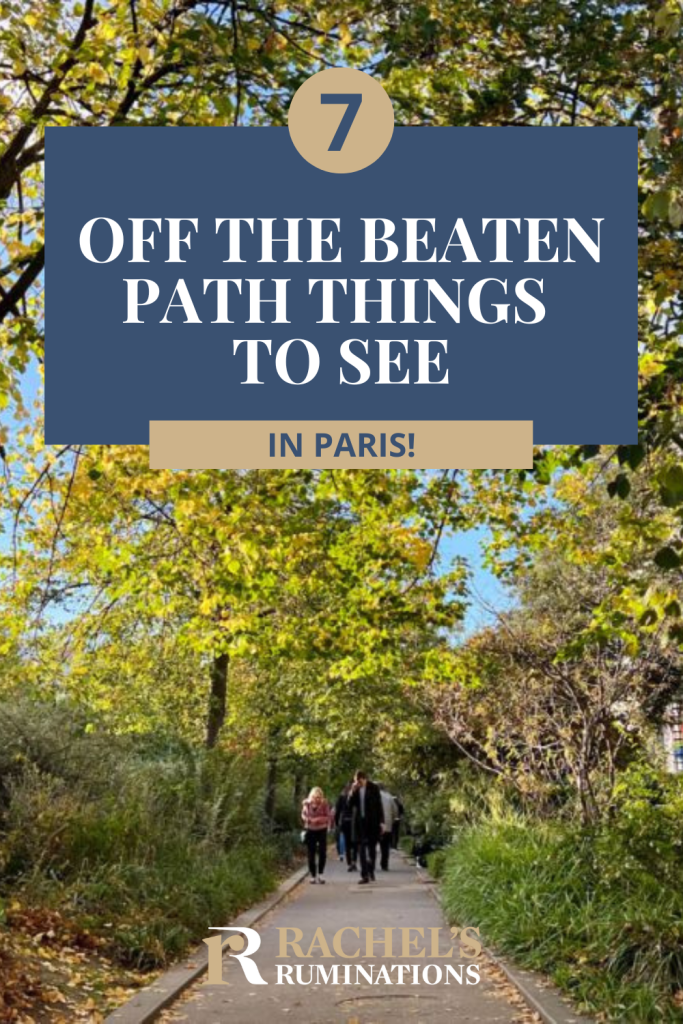
My travel recommendations
Planning travel
- Skyscanner is where I always start my flight searches.
- Booking.com is the company I use most for finding accommodations. If you prefer, Expedia offers more or less the same.
- Discover Cars offers an easy way to compare prices from all of the major car-rental companies in one place.
- Use Viator or GetYourGuide to find walking tours, day tours, airport pickups, city cards, tickets and whatever else you need at your destination.
- Bookmundi is great when you’re looking for a longer tour of a few days to a few weeks, private or with a group, pretty much anywhere in the world. Lots of different tour companies list their tours here, so you can comparison shop.
- GetTransfer is the place to book your airport-to-hotel transfers (and vice-versa). It’s so reassuring to have this all set up and paid for ahead of time, rather than having to make decisions after a long, tiring flight!
- Buy a GoCity Pass when you’re planning to do a lot of sightseeing on a city trip. It can save you a lot on admissions to museums and other attractions in big cities like New York and Amsterdam.
Other travel-related items
- It’s really awkward to have to rely on WIFI when you travel overseas. I’ve tried several e-sim cards, and GigSky’s e-sim was the one that was easiest to activate and use. You buy it through their app and activate it when you need it. Use the code RACHEL10 to get a 10% discount!
- Another option I just recently tried for the first time is a portable wifi modem by WifiCandy. It supports up to 8 devices and you just carry it along in your pocket or bag! If you’re traveling with a family or group, it might end up cheaper to use than an e-sim. Use the code RACHELSRUMINATIONS for a 10% discount.
- I’m a fan of SCOTTeVEST’s jackets and vests because when I wear one, I don’t have to carry a handbag. I feel like all my stuff is safer when I travel because it’s in inside pockets close to my body.
- I use ExpressVPN on my phone and laptop when I travel. It keeps me safe from hackers when I use public or hotel wifi.


